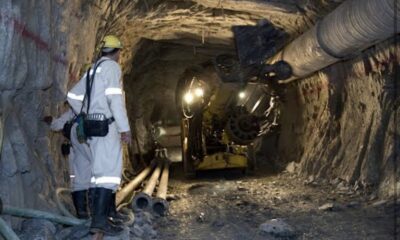Business
South Africa’s Oil Security at Risk as Natref Faces Shutdown Pressure

As South Africa becomes increasingly dependent on imported fuel, one of its last remaining crude oil refineries, Natref, is under significant financial pressure—raising alarms about the country’s energy security.
Located inland in Sasolburg, the National Petroleum Refiners of South Africa (Natref) relies on oil brought in through the Single Buoy Mooring (SBM) off Durban’s coast. However, with the closure of Durban’s other local refineries, SBM utilisation has dropped by a staggering 80%, sending Natref’s operational costs soaring.
This strain is putting the refinery’s future in jeopardy.
Speaking at the recent launch of the South African National Petroleum Corporation (SANPC), chairman Sipho Mkhize issued a stark warning: if these financial challenges continue, Natref could be forced to shut down. Such a move would push South Africa’s reliance on imported fuel from 75% to a worrying 85%, increasing the risk of disruptions in oil supply and weakening national energy resilience.
“If Natref closes, South Africa becomes even more vulnerable to external supply shocks,” Mkhize said.
To address the issue, SANPC is proposing to upgrade the existing SBM to a Multi-Buoy Mooring (MBM), which would improve the efficiency of liquid bulk handling in Durban’s port. The organisation also plans to secure key lease sites through Transnet National Port Authority (TNPA) to support Natref’s operations and reduce logistical bottlenecks.
More broadly, SANPC is positioning itself as a strategic energy player, formed through the consolidation of three Central Energy Fund subsidiaries—iGas, the Strategic Fuel Fund (SFF), and PetroSA. This new entity will manage critical assets such as the Rompco pipeline and the Saldanha storage facilities and has absorbed nearly 400 employees from its merged predecessors.
“SANPC is not just another company. It’s a national asset, aimed at modernising and stabilising the country’s energy sector,” Mkhize stated.
One of SANPC’s most strategic moves is its acquisition of the dormant SAPREF refinery, once capable of producing 180,000 barrels per day. Plans are underway to either revive it or transform it into a mega refinery that could process up to 600,000 barrels daily—substantially reducing the country’s reliance on imports.
Mineral Resources and Petroleum Minister Gwede Mantashe highlighted the urgency of these efforts. Since 2009, South Africa’s local refining capacity has dropped dramatically, with fuel imports climbing 11% annually. In 2022, domestic production accounted for less than 35% of the country’s fuel needs—down from 80% just over a decade ago.
Mantashe emphasised the need for a State-owned independent terminal operator to manage port access fairly and prevent international oil companies from controlling key supply points.
As global demand shifts toward cleaner energy, SANPC also plans to extract maximum value from oil blocks—especially those along South Africa’s southern coast—and adapt to the evolving energy landscape.
South Africa’s energy future now rests on the SANPC’s ability to stabilise refinery operations, revive infrastructure, and ensure consistent fuel access for a growing economy.
{Source: IOL}
Follow Joburg ETC on Facebook, Twitter , TikTok and Instagram
For more News in Johannesburg, visit joburgetc.com



























